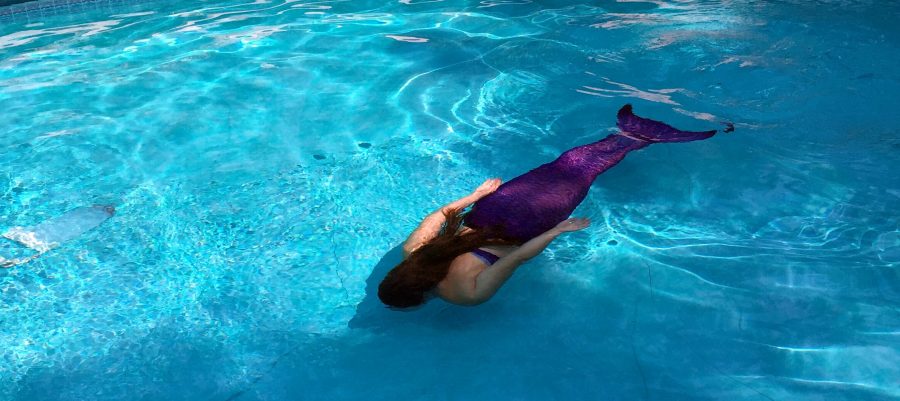Sure, Hans Christian Anderson’s fairytale seems like a walk on the beach, but mermaids have been known as temptresses, accident-prone and even killers throughout folklore history. But mermaids today are writing a whole different story. Disney’s The Little Mermaid has inspired young girls since the nineties. Morgan Parson, a junior majoring in nursing at The University of Alabama, is one of those intrigued girls.
Parson currently owns a mermaid tail and practices mermaiding, a fandom in which women, and occasionally men, buy or create a mermaid tail for the purpose of swimming and posing for photographs. Her fascination started at a young age.
“[I grew up loving] to do anything in the water,” Parson said.
Parson dreamed of becoming a marine biologist.
“That was a serious thought, it is so much more than just dolphins,” Parson said. ”[I] could list and identify hundreds of tropical fish.”
Though she has always lived in Tuscaloosa, Parson was captivated by salt water.
“All the fish are just more colorful, so that drew me first as a child,” she said. “It is more exotic.”
Despite her historical love of everything the sea, Parson faced skepticism. Mermaid tails go for a high price, and many parents, the same people who bought the books, movies and dolls for the girls as children, believe it to is an unwise investment. Parson’s parents were concerned, but she said they eventually understood.
“They understand play,” she said.
Another obstacle for many mermaids is social pressure. Parson said her boyfriend, Alex Kirkland, thinks she’s a 4 year old. Parson, like many considering the investment, asked Kirkland’s opinion on the matter.
“It wasn’t ‘Should I do this.’ It was, ‘I think I’m gonna do this.’ [My response] wasn’t going to change anything,” Kirkland said.
Boys usually do not share the same experience young girls have fantasizing as mermaids. While Parson grew up swimming in the pool, legs tied together with bungee cord, Kirkland identifies mermaids as the sirens featured in “Pirates of the Caribbean: On Stranger Tides.”
“I’m afraid she’s going to turn on me,” Kirkland said.
Regardless of his concern, Kirkland once tried mermaiding out for himself.
“I felt like I was going to drown,” Kirkland said.
Parson said she agreed with Kirkland’s first mermaiding experience.
“[He] totally lost control and wouldn’t use [his legs] at all,” Parson said.
Kirkland now leaves the mermaiding to the masters.
It may be surprising to learn Parson does not believe mermaids exist in reality. Her medical exposure leads her to “being logical.”
“It would be awesome if they were real, it’s so sad,” she said.
She enjoys playing up the mermaid role as a curious adventurous, but she remains grounded, letting her audience in on the secret of the tail. Parson’s tail is from the online mermaiding store called The Mertailor. The owner, Eric Ducharme, a mermaider himself, creates tails ranging from spandex starters to silicone tails used in cinema productions.
Parson views mermaiding as a hobby, comparing it to other individual sports.
“In track, there’s sprinting, there’s jogging,” Parson said. “There’s different ways of doing things. Its definitely exercise. It’d be cool if we had mermaid school here in Tuscaloosa. It’s a great way for little girls to promote physical activity.”
Recently, mermaid schools have launched in Florida, the Philippines, Spain and Los Angeles. Believing it could work like kayak rentals from Outdoor Recreation, Parson hopes the University will one day offer mermaiding classes to prospective girls for exercising and fulfilling dreams.









